cactusjumper
Gold Member
Lamar,
["No one will work mines. this includes the prohibition that no one will have any knowledge about the matter of mining, either directly or indirectly."
then the evidence of slag heaps means nothing. This is exactly why I would question the authenticity of such a document, when iron and other minerals were so vital to the lives of the early settlers. To prohibit them from mining any minerals is nearly the same as imposing a sentence on them my friend. Also, secular regulations were not imposed regionally in the New World by the Royality of Spain. They were imposed for everyone, all of the Kings' subjects, as it were.]
I would suggest, once again, that you leave Bolivia behind you, if you want to research the rules and precepts as they relate to the Jesuits of Sonora.
"As I previously stated, I am unaware of any such rules being in existence. If you are able to provide any factual ACCURATE documented proof in this regard, please feel free to do so. I am only interested in actual filed documentation...."
Unless I am assuming too much, I doubt you have documentation to back up one word of your last few posts. Nor do I. Here is what I base my opinions on:
My own research over the years is dependent on historians like: Father Charles Polzer, Herbert E. Bolton, Dunne, Donohue, Burrus, Roca, Hu-DeHart.......etc. I have especially looked into the history and character of Father Polzer. That entailed more than reading his writings. It included conversations with his friends and associates......in almost every case, they were both.
I came away with a confident trust in the moral compass of the man. When he writes that he used the Archivo General de Indias, Casa Lonja. Sevilla, Spain...Archivo General de la Nacion. Palacio Nacional, Mexico City, Mexico....Archivo Historico de Hacienda.....Archivo Historico Nacional......Archivo del Hidalgo del Parral.....Archivo de la Provincia de Mexico....Archivum Romanum Societatis Jesu.......Bancroft Library Manuscripts.....Biblioteca Nacional de Mexico.....Biblioteca Nacional de Espana......The Charles E. Beineke Collection......The Mariano Cuevas Collection......The Herbert E. Bolton Papers.......The Mateu Collection....
The Pablo Pastells Collection on New Spain and Hispaic America.....The Pablo Pastells Collection on the Philippines and the Marianas Islands.......The W.B. Stevens Collection.......The University of Arizona Special Collections and the Batican Library Microfilm Collection as the "Principal Arcives" for his research for "Rules and Precepts of the Jesuit Missions of Northwestern New Spain", you will forgive me for taking his word over that of my friend, Lamar.
I won't list the "Printed Works-Books, General References, Articles" that he sourced.
Do I have access to the documents? Of course not. Do I have FAITH in the authenticity of facts in Father Polzer's book? Yes!
Other than explaining how the rules and precepts were given to the Jesuits of Northwestern New Spain, and exactly who conceived and delivered them, that's the best I can do for now.
Take care,
Joe Ribaudo
["No one will work mines. this includes the prohibition that no one will have any knowledge about the matter of mining, either directly or indirectly."
then the evidence of slag heaps means nothing. This is exactly why I would question the authenticity of such a document, when iron and other minerals were so vital to the lives of the early settlers. To prohibit them from mining any minerals is nearly the same as imposing a sentence on them my friend. Also, secular regulations were not imposed regionally in the New World by the Royality of Spain. They were imposed for everyone, all of the Kings' subjects, as it were.]
I would suggest, once again, that you leave Bolivia behind you, if you want to research the rules and precepts as they relate to the Jesuits of Sonora.
"As I previously stated, I am unaware of any such rules being in existence. If you are able to provide any factual ACCURATE documented proof in this regard, please feel free to do so. I am only interested in actual filed documentation...."
Unless I am assuming too much, I doubt you have documentation to back up one word of your last few posts. Nor do I. Here is what I base my opinions on:
My own research over the years is dependent on historians like: Father Charles Polzer, Herbert E. Bolton, Dunne, Donohue, Burrus, Roca, Hu-DeHart.......etc. I have especially looked into the history and character of Father Polzer. That entailed more than reading his writings. It included conversations with his friends and associates......in almost every case, they were both.
I came away with a confident trust in the moral compass of the man. When he writes that he used the Archivo General de Indias, Casa Lonja. Sevilla, Spain...Archivo General de la Nacion. Palacio Nacional, Mexico City, Mexico....Archivo Historico de Hacienda.....Archivo Historico Nacional......Archivo del Hidalgo del Parral.....Archivo de la Provincia de Mexico....Archivum Romanum Societatis Jesu.......Bancroft Library Manuscripts.....Biblioteca Nacional de Mexico.....Biblioteca Nacional de Espana......The Charles E. Beineke Collection......The Mariano Cuevas Collection......The Herbert E. Bolton Papers.......The Mateu Collection....
The Pablo Pastells Collection on New Spain and Hispaic America.....The Pablo Pastells Collection on the Philippines and the Marianas Islands.......The W.B. Stevens Collection.......The University of Arizona Special Collections and the Batican Library Microfilm Collection as the "Principal Arcives" for his research for "Rules and Precepts of the Jesuit Missions of Northwestern New Spain", you will forgive me for taking his word over that of my friend, Lamar.
I won't list the "Printed Works-Books, General References, Articles" that he sourced.
Do I have access to the documents? Of course not. Do I have FAITH in the authenticity of facts in Father Polzer's book? Yes!
Other than explaining how the rules and precepts were given to the Jesuits of Northwestern New Spain, and exactly who conceived and delivered them, that's the best I can do for now.
Take care,
Joe Ribaudo




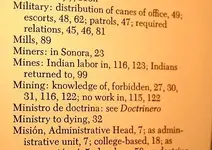
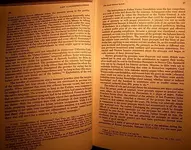
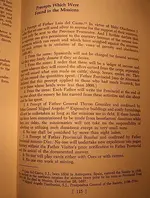
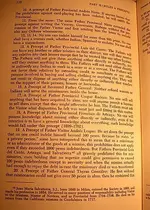
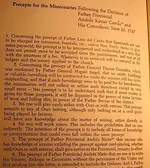
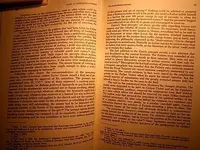

 ,
,
 ?
?